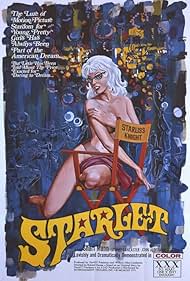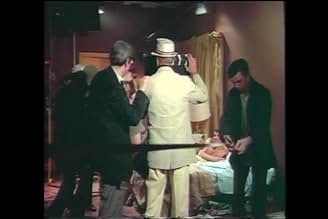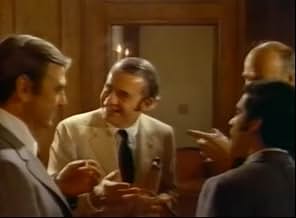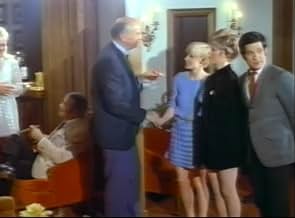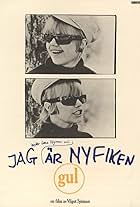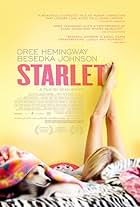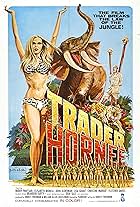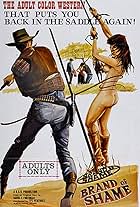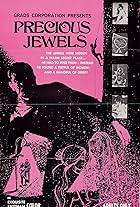Story of an actress who sleeps her way to the top.Story of an actress who sleeps her way to the top.Story of an actress who sleeps her way to the top.
Photos
Dee Lockwood
- Carol Yates
- (as Deirdre Nelson)
Victor Brandt
- Forrest Barker
- (as Vincent Brian)
David F. Friedman
- Self
- (as Dave Friedman)
William Allen Castleman
- Self
- (as Billy Allen)
Dirty Denny
- Motorcycle Gang Member
- (uncredited)
Meri McDonald
- Policeman's Daughter
- (uncredited)
- Director
- Writer
- All cast & crew
- Production, box office & more at IMDbPro
Storyline
Did you know
- TriviaThe first film to be released with a self-appointed XXX rating.
- ConnectionsFeatured in The Laughing, Leering, Lampooning Lures of David F. Friedman (1992)
Featured review
A movie camera is completely amoral, and it is not surprising that movie equivalents of the classic Victorian dirty postcard found a place among early film productions. Hollywood studio executives of the period recognised that this could easily give their fledgling industry a bad name and took effective steps to prevent most films distributed to regular movie houses from including sequences in which displays of naked flesh might have offended the religious sensibilities of their somewhat conservative patrons. This was probably a wise business policy, but it was unfortunately cloaked in the guise of an attempt to ensure their productions conformed with normal family values. Even more unfortunate was the fact that movie makers remained free to produce numerous films featuring extreme violence and gross brutality, which made nonsense of the industry's claim to promote such family values. However it was a surprisingly long time before critics got round to pointing out that whilst sex is a normal part of normal family life, extreme violence is not. Eventually of course such an artificial distinction had to break down, but this took a long time, and the unfortunate result was that early North American films which in any way featured sex were generally highly exploitive. The few truly erotic films that were shown came mostly from Europe; whereas the early Hollywood productions came from special "B" movie studios, and featured casts who were not regarded by most of those in the movie business as legitimate performers capable of contributing equally to more conventional films. Even the most lurid of the "B movies" produced in this way provided little more than limited titillation for the audience; but much more deplorably, they quickly established a well deserved reputation for gross exploitation of the participants - particularly those who were female. It was at this stage in the development of the modern North American movie industry that the film "Starlet" was released. Although an entirely fictional work, it shows clear signs of having originally been written as a semi-documentary.
Starlet was released almost 35 years ago and copies are not easy to find today. It is now not even easy to find (at least not in this part of North America) on the late night TV channels where it used to be featured regularly; and it may virtually disappear within the next few years. I am writing these comments now because I feel that this would be very unfortunate. It is a movie which depicts the production of a fictional but characteristic sexploitation film in some Hollywood studio, and appears to me to have probably been the work of a screenwriter and a director who wanted to create a pseudo-documentary film that exposed the extent to which the cast of such films were exploited by some studios. Had this remained the primary objective; the film, which is quite well made, could have been in the running for film festival awards, and even (but less likely) for recognition with an Oscar. Instead we had to wait another twelve years for the highly regarded NFB film "Not a Love Story" (1981) before any film of this type was released. In the case of Starlet, I would guess that the intentions of the Director were probably frustrated by investors who no doubt recognised that the film would bring in a much better return as a straight sexploitation movie which showed little attention to any associated social issues. Treated strictly in this way, it could also have had considerable appeal, if presented as a straight comedy which simply parodied the practices of the studios operating in this area. In practice however these two contrasting visions for the final movie have led to much of it becoming a confusing mishmash of scenes that simultaneously show not only the humour but also the degradation which arises from producing films in this way.
Because of this dichotomy it would be difficult to rate the final film very highly. Nevertheless it remains a significant production which dates from an important point in the development of the modern film industry, and which is well worth watching by anyone interested in the story of this development. The most widely distributed videotape of this film was released by Private Screenings (this in itself serves to indicate that the film finished up more as a sexploitation movie in its own right, than as a semi-documentary exposing the way in which the industry was operating); and their videotape version can probably still be purchased today by those willing to look for it. But since the film appears to incorporate some significant semi-documentary footage that appears to realistically portray the degree of exploitation which took place in Hollywood at the time, and because of the historical value of this material, I am writing this review to put in a plea for a DVD version of this film to be released in the near future - preferably (if this exists) in the form of a Directors Cut.
Starlet was released almost 35 years ago and copies are not easy to find today. It is now not even easy to find (at least not in this part of North America) on the late night TV channels where it used to be featured regularly; and it may virtually disappear within the next few years. I am writing these comments now because I feel that this would be very unfortunate. It is a movie which depicts the production of a fictional but characteristic sexploitation film in some Hollywood studio, and appears to me to have probably been the work of a screenwriter and a director who wanted to create a pseudo-documentary film that exposed the extent to which the cast of such films were exploited by some studios. Had this remained the primary objective; the film, which is quite well made, could have been in the running for film festival awards, and even (but less likely) for recognition with an Oscar. Instead we had to wait another twelve years for the highly regarded NFB film "Not a Love Story" (1981) before any film of this type was released. In the case of Starlet, I would guess that the intentions of the Director were probably frustrated by investors who no doubt recognised that the film would bring in a much better return as a straight sexploitation movie which showed little attention to any associated social issues. Treated strictly in this way, it could also have had considerable appeal, if presented as a straight comedy which simply parodied the practices of the studios operating in this area. In practice however these two contrasting visions for the final movie have led to much of it becoming a confusing mishmash of scenes that simultaneously show not only the humour but also the degradation which arises from producing films in this way.
Because of this dichotomy it would be difficult to rate the final film very highly. Nevertheless it remains a significant production which dates from an important point in the development of the modern film industry, and which is well worth watching by anyone interested in the story of this development. The most widely distributed videotape of this film was released by Private Screenings (this in itself serves to indicate that the film finished up more as a sexploitation movie in its own right, than as a semi-documentary exposing the way in which the industry was operating); and their videotape version can probably still be purchased today by those willing to look for it. But since the film appears to incorporate some significant semi-documentary footage that appears to realistically portray the degree of exploitation which took place in Hollywood at the time, and because of the historical value of this material, I am writing this review to put in a plea for a DVD version of this film to be released in the near future - preferably (if this exists) in the form of a Directors Cut.
Details
- Release date
- Country of origin
- Language
- Also known as
- Mädchen in der Rückenlage
- Filming locations
- Los Angeles, California, USA(location)
- Production companies
- See more company credits at IMDbPro
Box office
- Budget
- $100,000 (estimated)
Contribute to this page
Suggest an edit or add missing content

